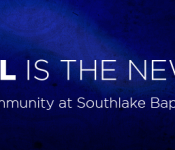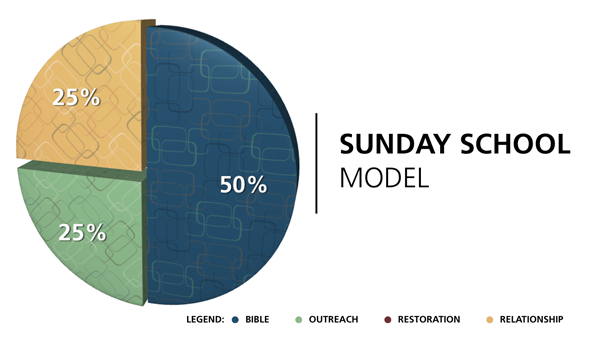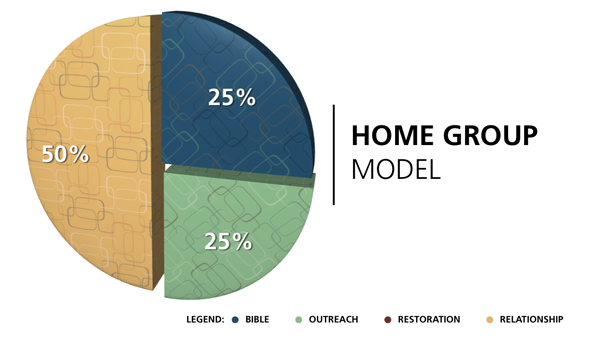Small is the new big

At Southlake Baptist, we believe all Christians should be engaged in some type of small group Christian community. As writer Seth Godin said, “Small is the new big.” Let me explain.
You might think attending church on Sunday morning with a large group of believers fulfills your weekly commitment to church, but when the Bible describes the normal Christian life, it points toward something more than just a Sunday morning, large-crowd experience.
In the New Testament, the Apostle Paul had a different take on ministry. As he was addressing the leadership of the church of Ephesus, he said: “And how I kept back nothing that was profitable to you, but have shewed you, and have taught you publicly, (ASSEMBLIES) and from house to house (SMALL GROUPS) ….” (Acts 20:20)
Paul said that, in addition to public meetings, he used home-level meetings for intimate instruction and Christian development.
This idea of meeting in homes seems very odd to some because, for many people, Christianity has lost some of its meaning and intimacy. In many places, the church has become top-heavy with programs. But church is not a location; it’s a body of people who “do life together.” That’s why we are sensing a renewed vision and quest for small group ministry.
Small group ministry enables the church to meet face to face, in intimate fellowship.
In a day when bigger seems better, it’s important to note that Jesus’ most lasting work was done in a small group of people who did life together. For three and a half years, He lived with 12 leaders who were His special community. Mark’s gospel tells us the first priority for this called-out community: “He appointed twelve – designating them apostles – that they might be with him….”(3:14) For three years, this small group spent time with Jesus.
Think about it: Sometimes the most significant things happen when we think small instead of large!
Can you imagine someone asking Jesus, “How many people are in your group?” and His answer being, “Twelve, and one of them is a traitor”?! Those 11 men and a small group of women were the basis of the church explosion described in the book of Acts!
Small groups have been a normative part of the church for years. From the time of Christ, to Sunday school, to home groups – all are founded on the basic concept that when we get small, more work gets done.
So what are the components of small groups?
Bible Teaching
Outreach
Restoration
Relationship
All small groups are some combination of the above components above with different areas of focus.
If you grew up with a church that had Sunday school, your small group structure looked something like this:
Bible teaching – 50% of the time
Outreach – 25% of the time
Restoration – 0% of the time
Relationship – 25% of the time.
By the way, Sunday School is a rather recent part of church history. Most historians believe that Sunday School was not conceived or a normal part of church life until the 1800’s.
Predating the Sunday School model, were small groups that met in homes. There has been a huge revival of home groups over the past 30 or so years as people have looked for a more hands-on Christianity. If you have ever been associated with a home group it looks something like this:
Bible teaching – 25% of the time
Outreach – 25% of the time
Restoration – 0% of the time
Relationship – 50% of the time.
If you have ever been involved in a recovery program it looks something like this:
Bible teaching – 25% of the time
Outreach – 0% of the time
Restoration – 50% of the time
Relationship – 25% of the time
The other significant difference between the different models is the location of the group. We think using both on-campus and off-campus locations is an effective mix of small group ministry.
In Scripture, it is clear that the early church worshiped both collectively and in their homes. In our day of big, expensive church facilities, it is easy to forget that the church is not really a building, but a group of people. Old timers used to call church buildings “meeting houses.” We see wisdom in gathering for meeting and training – and also taking the church out into our communities and into our homes. As long as “church” is associated with “building,” it is easy to compartmentalize church to a specific spot and time of the week.
Southlake Baptist engages in small group ministry in multiple formats to fit every need:
Campus Groups – We have family-integrated (whole family goes to one class) and age-segregated (different classes for different age groups) teaching times on Sunday morning before our main worship service. For those of you who grew up in church, Campus Groups function much like the “Sunday school” time. These groups major on Bible teaching and outreach. Most of the relationships in these groups happen in scheduled activities during the week.
Home Groups – These groups meet in our church members’ homes around Southlake during the week. It is a wonderful time of relationship between the members of our church family and their guests, along with an additional time of prayer and Bible study related to the Sunday morning message.
Recovery Groups – In the late fall or spring, Southlake Baptist will be launching recovery groups for people who are struggling with various “hurts, habits, and hang-ups.”
Men’s Group – Southlake Baptist will be hosting a “Men’s Fraternity” at a central location in downtown Southlake to help men grow as husbands, fathers, men, and leaders.
Women’s Group – Southlake Baptist will be hosting several women’s Bible studies in our “members’ homes” around Southlake where ladies can be encouraged, refreshed, and challenged.
At Southlake Baptist, we are purposely trying to get small – so God can do a big work in a meaningful way! For more information about our Small Group Communities visit southlakebaptist.com






Comments are closed.